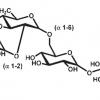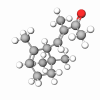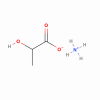The Lotus (Lotus Japonicus) plant is an especially revered plant in Asian cultures where it is considered to be a plant of renowned beauty. The plant, the roots, leaves, flowers, and seeds have all found uses in food, health, and cosmetics.
Interestingly, Lotus is a member of the family of plants called legumes which are distinguished by the fact that the fruiting body exists as a bifurcated unit in which the seeds are attached along the “hinged” portion of the pod. Lotus also distinguishes itself by being a legume well-known to fix nitrogen through a symbiotic relationship with blue-green bacteria of the genus Rhizobium.
Lotus Japonicus is an ingredient based on the extraction of symbiosomes (root nodules) isolated from Lotus roots. This ingredient has demonstrated unique effects in controlling skin color and tone. It has recently become known that one mechanism of melanogenesis begins with the initiation of a cascade of enzyme reactions driven by the formation of nitric oxide free radicals formed when UVB light (principally) stimulates the formation of nitric oxide synthase, the enzyme responsible for converting arginine to citrulline and releasing a molecule of nitric oxide.
The formation of nitric oxide free radicals upregulates cyclic GMP through the “NO-cGMP” pathway. Ultimately, c-GMP becomes one mechanism for upregulating tyrosinase, the enzyme responsible for forming melanin from DOPA, through a protein kinase C pathway (PKC). An intermediate in this cascade is the enzyme guanylyl cyclase, a heme-based enzyme, that binds nitric oxide and as a consequence of this, upregulates c-GMP.Lotus Japonicus Symbiosome Extract is known to contain a plant-based heme protein called Leghemoglobin that very closely mimics human globin proteins such as hemoglobin and myoglobin. Leghemoglobin has been shown to bind nitric oxide strongly and it has been hypothesized that perhaps if leghemoglobin from Lotus symbiosomes could compete with guanylyl cyclase for available nitric oxide, then perhaps the extract would slow down the formation of tyrosinase by controlling the up-regulation of c-GMP.











